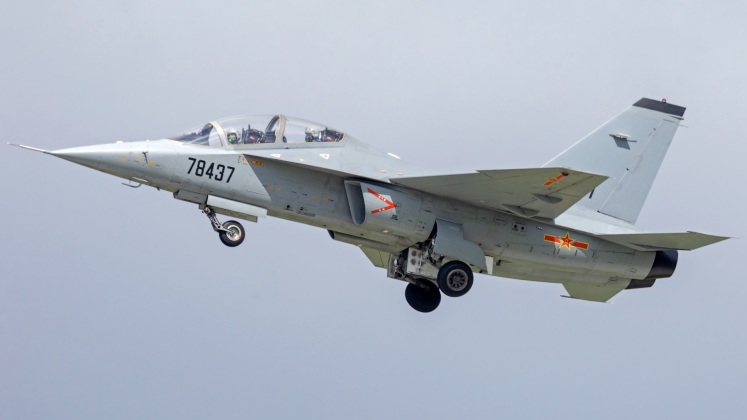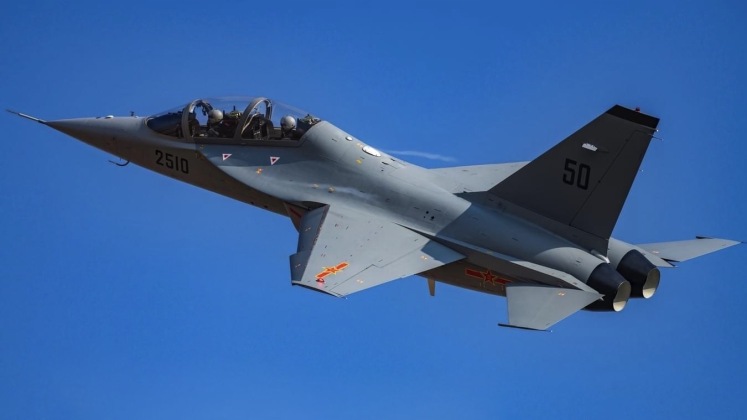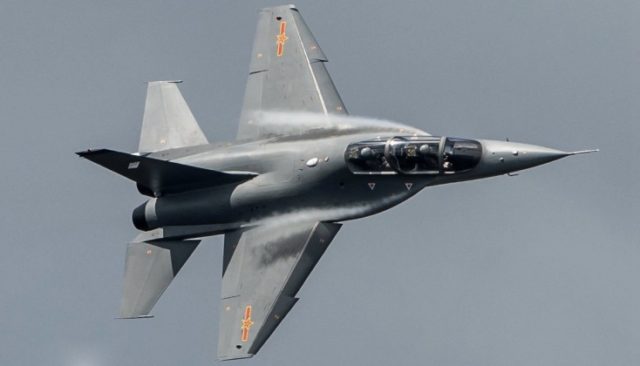Military watch || The Ethiopian Air Force is reportedly set to become the second export client for China’s L-15 lightweight fighter jet, after the Defence Ministry reportedly placed an order for the aircraft in 2021. The aircraft are expected to replace the country’s ageing fleet of MiG-23 variable swept wing third generation fighters, which form one of its two squadronsalongside a larger unit of Russian-supplied Su-27 Flanker jets acquired in the 1990s. While plans for eventual replacement of the Su-27have been widely speculated, with more modern variants of the Flanker design considered leading contenders, the older and considerably lighter MiG-23 has been out of production since 1985 with Ethiopia being one of just five remaining operators of the class alongside Angola, North Korea, Syria and Cuba. The L-15 is a derivative of China’s JL-10 trainer which first entered service in 2010, and is considered the most advanced of three modern trainer classes alongside the JL-8 and JL-9.
The trainer’s combat capabilities are far ahead of those of most other aircraft of its kind, with a supersonic Mach 1.4 speed and high manoeuvrability, and other than the Taiwanese Brave Eagle it is considered the world’s most capable trainer in terms of combat performance. The L-15 fighter inherits the very low operational costs of the JL-10 trainer but combines them with an advanced combat capability and access to superior classes of weaponry. Other notable improvements include integration of a passive electronically scanned array (PESA) radar with a detection range of over 110km, and the ability to carry jammers for electronic attack missions.

The L-15 is one of the lightest fighters in the world using twin engines, which although raising operational costs compared to other trainers has the benefits of providing engine redundancy for combat missions. The fighter’s flight performance is comparable to that of the American F-16 Fighting Falcon, albeit with a significantly lower speed and endurance, meaning it fails to match that of the MiG-23 which is the fastest and highest flying single engine fighter in the world.
The L-15 is nevertheless superior to the fighters it is replacing in all other respects, being significantly simpler and cheaper to maintain and operate, in part due to much more modern construction materials, and having avionics and sensors several decades ahead of those of the MiG-23 optimising it for both precision strike and air to air missions. The aircraft will reportedly integrate PL-12 air to air missiles, which will make in the lightest combat aircraft in the world with access to active radar guided munitions with such ranges and provide a very comfortable performance advantage over the MiG-23 and most aircraft fielded by neighbouring states.

The PL-12 will provide an advantage in engagement range over both the MiG-29 fighters of neighbouring Eritrea, and crucially over the F-16, Mirage 2000 and Rafale fighters of the Egyptian Air Force which rely on the obsolete AIM-7 and MICA missiles. Other than the Rafale, all the aforementioned fighters use mechanically scanned array radars which are considerably easier to jam and less efficient than the mechanically scanned radar on the L-15. Ongoing tensions between Egypt and Ethiopia over the latter’s Grand Renaissance Dam project, which some Egyptian sources claim could threaten its water supplies, make the L-15’s ability to counter such fighters particularly valuable. Ongoing internal conflict with the Tigray insurgency in Ethiopia, which is widely reported to be receiving Western backing, also makes the L-15’s precision strike capabilities highly valued.
























